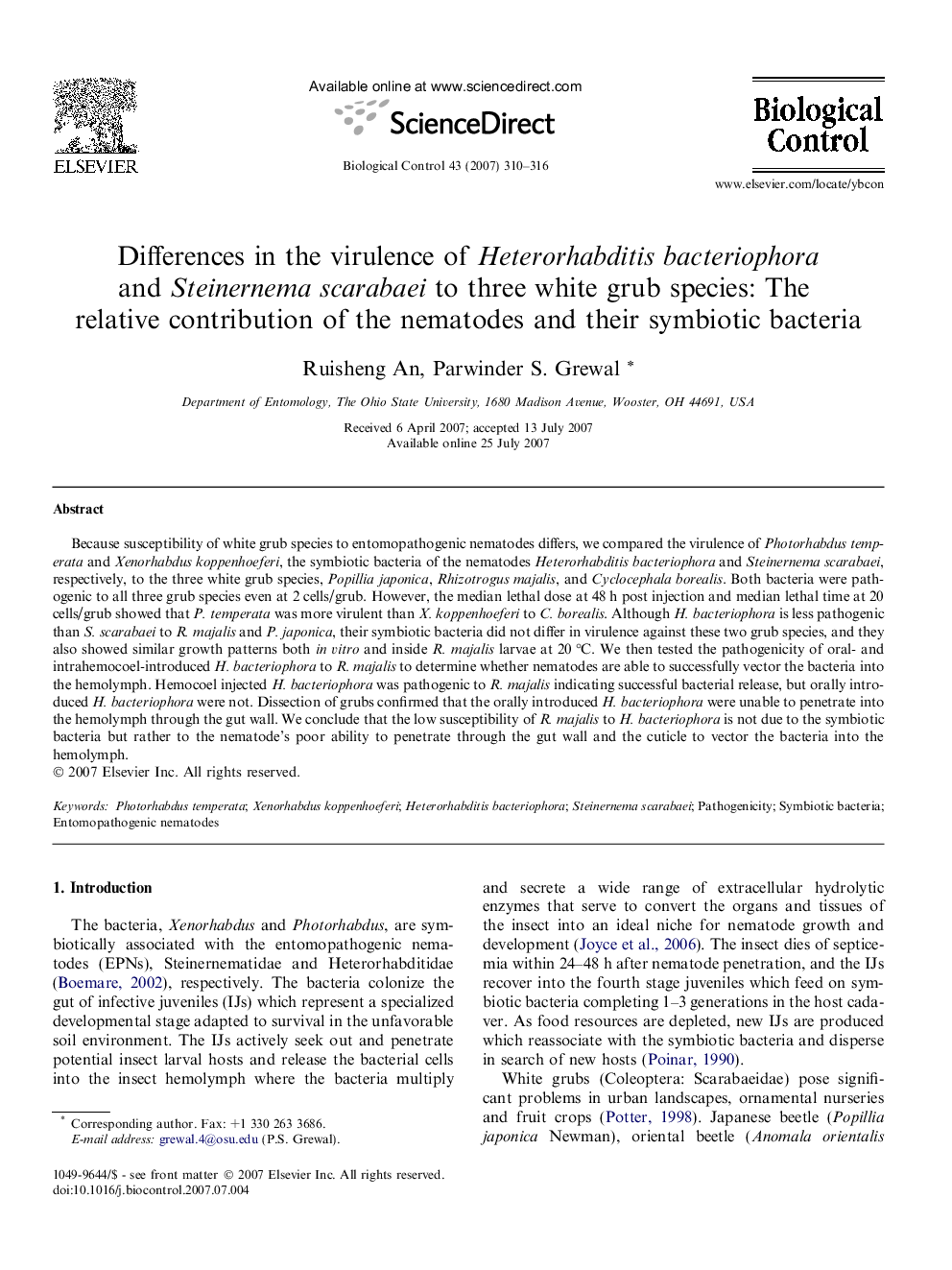| کد مقاله | کد نشریه | سال انتشار | مقاله انگلیسی | نسخه تمام متن |
|---|---|---|---|---|
| 4504989 | 1321120 | 2007 | 7 صفحه PDF | دانلود رایگان |

Because susceptibility of white grub species to entomopathogenic nematodes differs, we compared the virulence of Photorhabdus temperata and Xenorhabdus koppenhoeferi, the symbiotic bacteria of the nematodes Heterorhabditis bacteriophora and Steinernema scarabaei, respectively, to the three white grub species, Popillia japonica, Rhizotrogus majalis, and Cyclocephala borealis. Both bacteria were pathogenic to all three grub species even at 2 cells/grub. However, the median lethal dose at 48 h post injection and median lethal time at 20 cells/grub showed that P. temperata was more virulent than X. koppenhoeferi to C. borealis. Although H. bacteriophora is less pathogenic than S. scarabaei to R. majalis and P. japonica, their symbiotic bacteria did not differ in virulence against these two grub species, and they also showed similar growth patterns both in vitro and inside R. majalis larvae at 20 °C. We then tested the pathogenicity of oral- and intrahemocoel-introduced H. bacteriophora to R. majalis to determine whether nematodes are able to successfully vector the bacteria into the hemolymph. Hemocoel injected H. bacteriophora was pathogenic to R. majalis indicating successful bacterial release, but orally introduced H. bacteriophora were not. Dissection of grubs confirmed that the orally introduced H. bacteriophora were unable to penetrate into the hemolymph through the gut wall. We conclude that the low susceptibility of R. majalis to H. bacteriophora is not due to the symbiotic bacteria but rather to the nematode’s poor ability to penetrate through the gut wall and the cuticle to vector the bacteria into the hemolymph.
Journal: Biological Control - Volume 43, Issue 3, December 2007, Pages 310–316